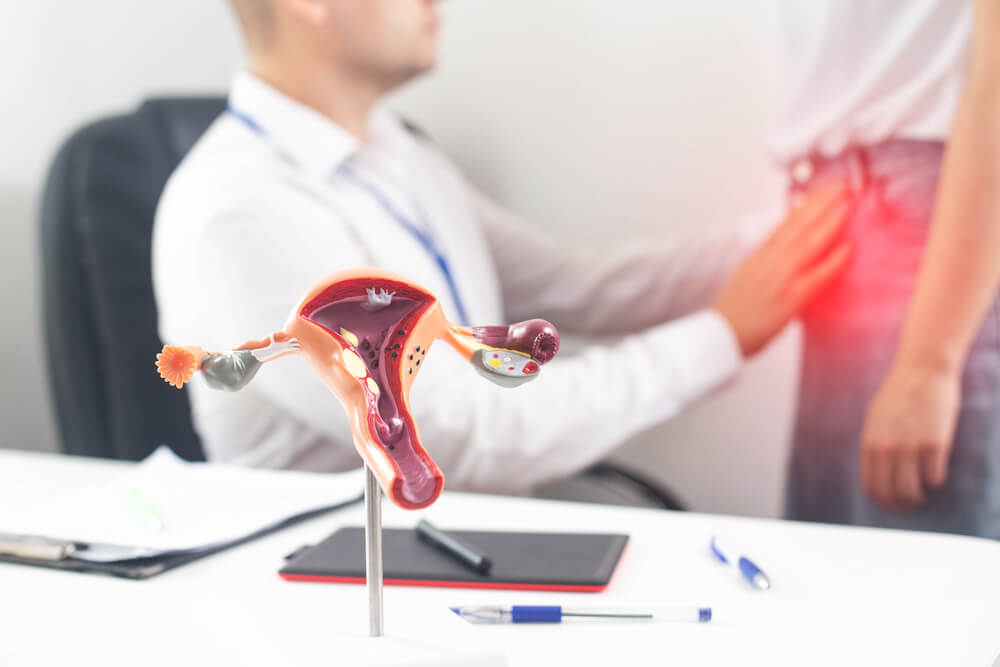In the ever-evolving world of medical science, one of the most groundbreaking developments has been in the domain of gynecological treatments. Specifically, the rise of robotic-assisted gynecology surgery has paved the way for advanced techniques, one of which is laparoscopic surgery for fibroids. In this article, we will delve into the world of laparoscopic myomectomy, understanding fibroids, and why the laparoscopic fibroid removal technique is gaining momentum.
Understanding Fibroids
Before we go into the specifics of fibroids laparoscopic surgery, it’s essential to understand what fibroids are. Fibroids are non-cancerous growths that develop in or around the uterus. Though the exact cause remains unclear, they seem to be influenced by hormones, especially estrogen.
Symptoms of Fibroids
Fibroids can range in size, and depending on their size and location, the symptoms can vary. Some common symptoms include:
- Heavy menstrual bleeding
- Prolonged menstrual cycles
- Pain or pressure in the pelvis
- Frequent urination
- Difficulty emptying the bladder
For many women, fibroids can significantly impact their quality of life. Hence, medical intervention, like a myomectomy for fibroids, becomes essential.

What Is Laparoscopic Myomectomy?
A laparoscopic myomectomy is a surgical procedure that involves the removal of fibroids from the uterus. During this procedure, small incisions are made in the abdomen, and specialized instruments are used to remove the fibroids.
Benefits of Laparoscopic Myomectomy Over Traditional Surgery
- Less Invasive: Unlike traditional open surgery, fibroids laparoscopic surgery only requires small incisions, reducing the risk of complications.
- Faster Recovery: Recovery time post laparoscopic fibroid removal is considerably shorter than its traditional counterpart.
- Reduced Scarring: Due to the minimalistic nature of the incisions, scarring is much less noticeable.
- Precise Removal: The magnified view provided by the laparoscope allows surgeons to work with increased precision.
The Laparoscopic Fibroid Removal Process
The entire procedure of laparoscopic myomectomy can be summarized in a few steps:
- Administration of Anesthesia: General anesthesia is given to ensure the patient feels no pain during the procedure.
- Making Incisions: Typically, 3-4 small incisions are made in the abdomen.
- Insertion of Laparoscope: A laparoscope, a long, thin tube with a high-intensity light and camera at the front, is inserted through one of the incisions.
- Fibroid Identification and Removal: Surgeons identify the fibroids using the images sent to the monitor by the laparoscope. Specialized instruments are then used to remove them.
- Closure: Once the fibroids are removed, the incisions are stitched up.
Post laparoscopic fibroid removal, patients are usually discharged within a day and can resume regular activities in a couple of weeks.
Who Should Consider Laparoscopic Myomectomy?
Not everyone with fibroids requires surgery. However, those who experience severe symptoms, want to get pregnant or have large fibroids, might consider a myomectomy for fibroids.
Always consult with a gynecologist to understand the best course of action. In some cases, medication or other less invasive treatments might be recommended before considering fibroids laparoscopic surgery.
Understanding the Types of Fibroids
Fibroids are not a one-size-fits-all condition. They can vary in terms of location and may manifest differently within the uterus. The primary types include:
- Submucosal Fibroids: These grow into the uterine cavity and are the least common type. However, they can lead to heavy menstrual bleeding and fertility problems.
- Intramural Fibroids: Situated in the muscular wall of the uterus, these are the most common type. They can grow large, causing the uterus to stretch. This stretching can lead to prolonged and heavy menstrual cycles or pelvic pain.
- Subserosal Fibroids: These fibroids grow on the outer wall of the uterus. While they might not impact the menstrual cycle, they can grow large and create pressure on surrounding organs.
- Pedunculated Fibroids: These are stem-attached fibroids, a subset of subserosal fibroids. They grow on a stalk, creating a tumor-like appearance.
Understanding the type of fibroid is crucial in determining the best treatment approach, including whether laparoscopic fibroid removal is suitable.
The Importance of Early Diagnosis
Detecting fibroids at an early stage can make a significant difference in managing the condition and determining the optimal treatment plan. Regular gynecological check-ups play a pivotal role in early detection. Often, fibroids are discovered during routine pelvic exams, even before symptoms become evident.
Some diagnostic methods include:
- Ultrasound: This is the most common method, where sound waves capture the image of the uterus, helping in the detection and measurement of fibroids.
- Magnetic Resonance Imaging (MRI): Offering a detailed image of the size and location of the fibroids, an MRI can help doctors determine if a patient is a suitable candidate for laparoscopic myomectomy.
- Hysteroscopy: In this method, a small lighted telescope is inserted through the cervix into the uterus, allowing the doctor to view the inside of the uterus.
By seeking regular medical check-ups and staying attentive to any unusual symptoms, women can ensure timely diagnosis, making treatment, including laparoscopic surgery for fibroids, more effective and less complicated.

Factors Influencing the Growth of Fibroids
Several factors can influence the growth and development of fibroids:
- Hormonal Changes: Fluctuations in hormones, especially estrogen and progesterone, which prepare the uterus lining for pregnancy, can promote the growth of fibroids.
- Genetics: There’s evidence to suggest that fibroid development might run in families. If your mother or sister had fibroids, your risk could be higher.
- Diet and Lifestyle: Consuming a lot of red meat and ham has been linked with a higher risk of fibroids. On the contrary, consuming plenty of green vegetables seems to protect women from developing them.
Alternatives to Laparoscopic Myomectomy
While laparoscopic myomectomy is a popular choice for fibroid treatment, it’s essential to be aware of alternatives:
- Medication: Drugs, particularly those affecting hormonal levels, can be effective in reducing the size of fibroids or alleviating symptoms. However, they may not be a long-term solution for all.
- Uterine Fibroid Embolization (UFE): This is a procedure wherein small particles are injected into the arteries supplying the uterus, cutting off the fibroids’ blood supply, causing them to shrink.
- MRI-Guided Ultrasound Surgery: A non-invasive procedure that uses magnetic resonance imaging (MRI) to guide sound waves to ablate or destroy the fibroid tissue.
- Endometrial Ablation: This procedure involves removing the lining of the uterus to alleviate heavy menstrual bleeding. However, it’s not specifically a treatment for fibroids and isn’t recommended for those with large fibroids.
Aftercare and Recovery
Post fibroids laparoscopic surgery, it’s crucial for patients to follow specific care instructions to ensure a smooth recovery. These might include:
- Pain Management: Over-the-counter pain relievers can be effective. However, it’s essential to consult with the doctor before starting any medication.
- Activity Restrictions: While light activities might be resumed within a few days, strenuous exercises or heavy lifting should be avoided for at least six weeks.
- Regular Check-ups: Follow-up visits are essential to monitor healing and ensure no complications arise post-surgery.
By staying informed and understanding all options available, women can make empowered decisions regarding their health and well-being.
Conclusion
In the modern age of medical advancements, laparoscopic surgery for fibroids offers a less invasive, efficient, and faster-recovery option for many women. With the precision and expertise associated with laparoscopic fibroid removal, women now have an excellent choice to address fibroid-related issues. As always, the decision to undergo any surgical procedure should be taken after comprehensive consultation with healthcare professionals. Don’t hesitate to get in touch with us at South Miami OB-GYN Associates if you have any questions or health concerns.




